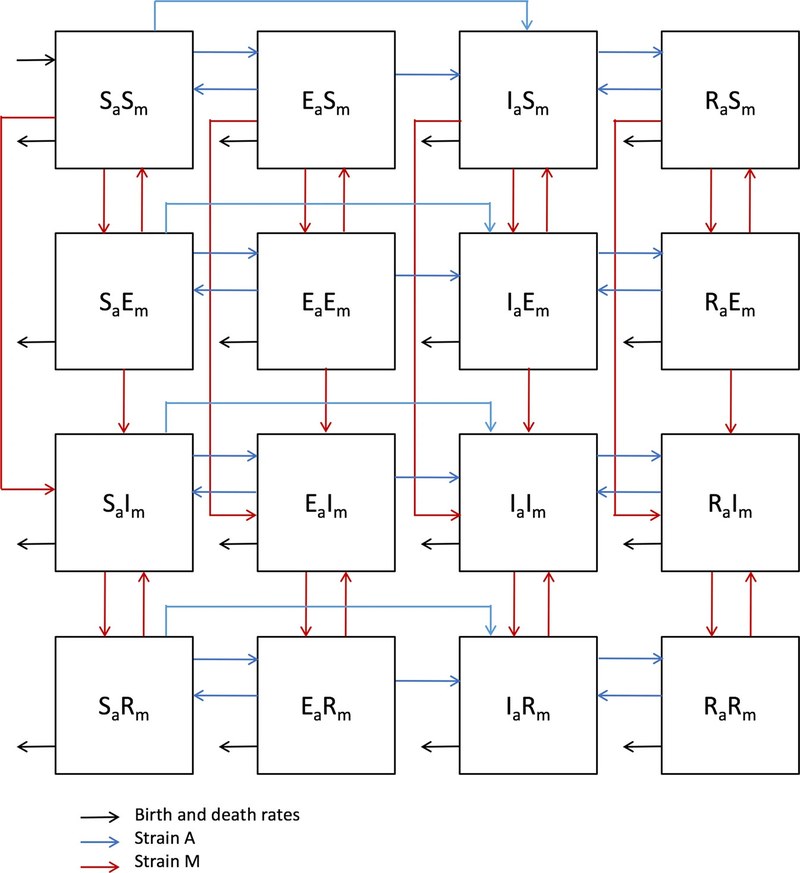Clara Prats and Martí Català of the BIOCOM-SC research group study the effect of tuberculosis on human evolution
Jan 13, 2020
A new multidisciplinary study, with a team from the Physics Department of the UPC and the IGTP-CMCiB, uses mathematical modeling to provide new information on how the origin of tuberculosis has affected population growth and female resistance to infection. The study, published in Scientific Reports, describes mechanisms through which tuberculosis infection has contributed to shaping human society as we know it.
Tuberculosis (TB), caused by the Mycobacterium tuberculosis complex (MtbC) microbe, has been infecting humans since the old stone age, or paleolithic period, when people lived as hunter-gatherers, organized in small groups. About 43,000 years ago, during the Neolithic period, people began to settle and create farms; Around this time, the most modern form of tuberculosis developed. TB is a devastating disease, it has killed about 1,000,000,000 people in the last 200 years, the equivalent to the current population of the entire American continent, and raises interesting questions. Why didn't the small population of the first humans kill? How have tuberculosis and its guests survived? And why does it seem that women are more resistant than men to ailment? To answer these questions, the team formed by Martí Català and Clara Prats of the Department of Physics of the UPC and Pere-Joan Cardona to the Experimental Tuberculosis Unit (UTE) to the IGTP, has carried out a complex task of detectives through a mathematical model to combine biological, anthropological and historical data to offer answers. The result is surprising: not only humans have survived despite TB infections, but they probably have played a key role in the current form of human society as we know it.
The study is a collaboration between Institut de Recerca Germans Trias i Pujol (IGTP), el Centre de Medicina Comparativa i Bioimatge (CMCiB-IGTP), CIBERES and the Polytechnic University of Catalonia (UPC). The article has been published in the journal Scientific Reports and has already echoed in the press. The long story about the battle between people and bacteria is considered: When the paleolithic disease appeared, population growth had fallen from 1% to only 0.003%, probably small groups became infected and were dying. Our model shows that at that time, when infant mortality was 50%, women had to have two surviving children (that is, four parts) to maintain the population. With the arrival of modern strains of Mycobacterium tuberculosis, the ailment became more deadly and increased these figures to 3 surviving children, or 6 pregnancies, in order to maintain the species. The reason why the population went from hunter-gatherer dynamics to settlement and agricultural life has not been understood, at a time when the habitable parts of the world were limited from the Indian Subcontinent in Australia, due to glaciation generalized So far there has been no obvious reason to explain this change.
This study has been carried out at the l Centre de Medicina Comparativa i Bioimatge (CMCiB-IGTP), together with the UPC, using a mathematical model. The team designed a mathematical model in compartments based on five differential equations to describe the dynamics of MtbC infections in the population. It allows researchers to model a standard scenario of a group of people in which a person infected with TB is included. Different factors can be included and changed to show how they affect population dynamics over time. This model has been used to study how ancient and modern strains of tuberculosis interacted, what are the factors necessary to maintain the epidemics of tuberculosis and how female resistance has been essential for the coevolution of MtbC and humans.

Share: